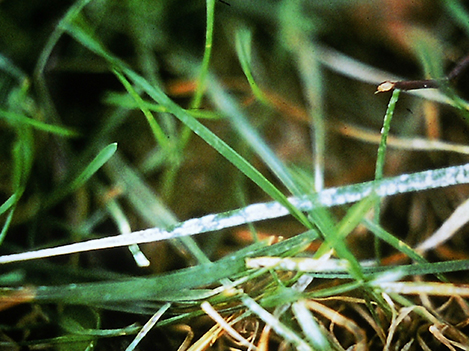Your Cart


This disease is a parasitic form of a plant life called fungi. Fungi live in the soil thatch and dead leaves all year round, and feed by drawing nutrients from the grass.
Powdery mildew is a damaging disease of bluegrasses and fescues. Periods of low light intensity and poor air circulation favor the disease. Heavily shaded areas are particularly susceptible.
The disease is most severe during the spring and fall at temperatures between 60-72°F (15-22°C); however, it can occur at temperatures ranging from 34-86° F (1-30°C). Powdery mildew survives the winter in infected plants or plant debris.
- Early stages of powdery mildew are recognized as isolated colonies of whitish fungal structures called mycelia.
- Mycelia colonize and infect a large portion of the leaf blade with a whitish gray dusty powder.
- Older leaves are infected more severely than younger leaves.
- Heavily infected leaves can turn yellow, then brown and die. Colonies of powdery mildew darkens with age and sometimes transform into dark fruiting bodies.
- Infected plants are weakened, becoming more susceptible to other stresses.
Several cultural practices will help control powdery mildew.
- Increase air circulation and light penetration through pruning or thinning trees and shrubs.
- Overseed with a shade tolerant seed mixture.
- Raise mowing height as well as water deeply and infrequently to avoid drought stress.
- Provide adequate fertility, while avoiding excessive nitrogen that can contribute to the disease.
- Core aerate to increase water and air movement within the grass plants.